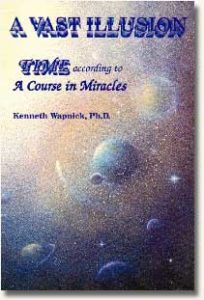
(by Tim Wise)
Songs & Movies about Time:
Many great songs have been sung about ‘time’…
- “Time, time, time…see what’s become of me….” Simon & Garfunkel Hazy Shade of Winter
- “Does anybody really know what time it is, does anybody really care?”… Chicago
- “If you’re lost you can look, and you will find me… Time after Time“… Cyndi Lauper
- “There is a season (turn, turn, turn), and a time to every purpose, under heaven”… Byrds
Oprah a while back put out the movie A Wrinkle in Time. It joins a list of more than a hundred movies with “Time” in the title, many in which the characters seem to step outside of time, somehow control it, and/or jump around in it.
Some of the more memorable ones are: Somewhere in Time, Out of Time, A Time to Kill, The Time Machine, and my favorite… Time Bandits. And there are dozens more about time without time in the title, including: Deja Vu, Groundhog Day, and even the Christmas classic It’s a Wonderful Life.

Time holds an incredible fascination and investment for all of us, and we hear it resound every time we wish each other a “Happy New Year.” It’s a greeting that conveys our hopefulness for a new time, a year that’s soon coming that will preferably be better than previous years.
Ken Wapnick said that of all the many topics that Course students ask him to discuss, the subject of time was inquired about more than all the others.

The Course says the only question we should ever ask about anything is… “What is it for?” What is its purpose? And there’s only two possible answers. At the level of the mind, is it to help support the ego thought system of separation, to confirm the ego’s identity story of sin-guilt-fear? Or does it become a classroom for the Holy Spirit to teach us forgiveness, i.e. letting go of our own belief in separation and blaming others and God for it?
So we will turn to the issue of ‘time’ with these same questions… what is time for? What is time’s purpose from an ego point of view… or from the Holy Spirit’s true perception of it?

But first let’s look at some of the ways time is talked about in the Course. Time is mentioned right away, early on, in five of the 50 Miracle Principles at the beginning of the ACIM Text (p.4-6):
- #15 (time’s purpose),
Each day should be devoted to miracles (in the Course a miracles is simply an act of true forgiveness and its result). The purpose of time is to enable you to learn how to use time constructively. It is thus a teaching device and a means to an end. Time will cease when it is no longer useful in facilitating learning (forgiveness).
- #19 (miracles and time),
Miracles make minds one in God. They depend on cooperation, because the Sonship is the sum of all that God created. Miracles therefore reflect the laws of eternity, not of time.
- #25 (miracles as holographic in time),
Miracles are part of an interlocking chain of forgiveness which, when completed, is the Atonement. Atonement works all the time and in all the dimensions of time.
- #47 (miracles as timeless),
The miracle is a learning device that lessens the need for time. It establishes an out-of-pattern time interval not under the usual laws of time. In this sense it is timeless.
- #48 (miracles controlling time).
The miracle is the only device at your immediate disposal for controlling time. Only revelation transcends it, having nothing to do with time at all.

Time does not really exist.
Jesus introduces some amazing ideas about time in the above lines, that will be developed later in the Course. He quickly re-emphasizes however some of these same miracle principles on time… one page later in Chap. 1, Sec II, “Revelation, Time and Miracles.”
4 “No man cometh unto the Father but by me” does not mean that I am in any way separate or different from you, except in time, and time does not really exist…
6 The miracle minimizes the (ego’s) need for time. In the longitudinal or horizontal plane (of time and space), the recognition of the equality of the members of the Sonship appears to involve almost endless time. However, the miracle entails a sudden shift (The Holy Instant), from horizontal (in the world) to vertical perception (in the mind). This introduces an interval from which the giver and receiver both emerge farther along in time than they would otherwise have been. (Jesus later in The Text does call this the Holy Instant.) The miracle thus has the unique property of abolishing time to the extent that it renders the interval of time it spans unnecessary. There is no relationship between the time a miracle takes and the time it covers. The miracle substitutes for learning that might have taken thousands of years. It does so by the underlying recognition of perfect equality of giver and receiver on which the miracle rests (the willingness, to let go of the past and experience this equality as one Son of God… is described later in the Course as forgiveness). The miracle shortens time by collapsing it, thus eliminating certain intervals within it. ( T p.7-8, par. 4 & 6)
The most hard hitting of the above lines,to our egos anyway, is … “time does not really exist.” He echoes this again and again throughout the Course, saying things like… “Time is a trick, a sleight of hand, a vast illusion in which figures seem to come and go as if by magic.” (Les. 158, p.298, par.4)

The Ego’s Use of Time: Preserving Our Belief in Sin & Separation
In Heaven, time does not exist at all. Therefore it doesn’t exist, period. Everything outside of heaven is simply illusion, including time (… Course Metaphysics 101). We don’t believe that, but Jesus is very matter of fact that’s just the way it is…
When we seemed to step outside of heaven and play with the idea of separation in our mind, we made up the sin-guilt-fear story to prove to ourselves we actually pulled off a cosmic disconnect from our Father and our true identity in Heaven. We separated (our sin in the past) and it was/is terrible (the guilt we feel now) and we will be punished (fear of the future). We then projected that story onto an entire made-up universe of time and space. Space proves our separation (I’m here and you’re over there)… and time (past, present, future) provides a screen for the projection of our mind’s sin-guilt-fear story, except now it gets projected onto others. Sin-guilt-fear is alive and well but it’s in you, not me…it’s your sin in the past (not mine so much), the present guilt that you certainly have, and the fear of threatening punishment and doom about the future that you should feel, as payment for what you did.
As you look upon yourself and judge what you do honestly, you may be tempted to wonder how you (or your brother) can be guiltless. Yet consider this: You (and your brother) are not guiltless in time, but in eternity. You have “sinned” in the past, but there is no past. Always has no direction. Time seems to go in one direction, but when you reach its end it will roll up like a long carpet spread along the past behind you, and will disappear. As long as you believe the Son of God is guilty you will walk along this carpet, believing that it leads to death. And the journey will seem long and cruel and senseless, for so it is. (Text p.237, par.3)

The Carpet of Time
The Course tells us consistently the Son of God is still and forever guiltless (the Atonement principle). In the moment of seeming separation, time seemed to roll out like a long carpet, and immediately rolled back up with our acceptance of the Atonement. It’s already a done deal. What appears to be happening is that we are just reviewing that carpet of time in a linear way from our individual viewpoint in time and space, and have not quite reached the Atonement part of the story yet. ( “For we but see the journey from the point at which it ended, looking back on it, imagining we make it once again; reviewing mentally what has gone by.”…Les. #158). So in a sense we are all in replay mode, watching something that’s already happened.
But in truth (Heaven), it didn’t happen at all…
So… did you get all that? Ken Wapnick and Jesus both caution us to not try to wrap our brains around these ideas about time (as part of the world’s illusion, brains were made not to to ‘get’ them). However we are promised an internal experience in our minds through forgiveness, where we eventually understand and feel this truth as an experience.
And we can do that now, with Jesus’ help. In fact the only time we can do it is… now. Not yesterday, not tomorrow, but now.

Alright then, that’s a general look at the metaphysics of time… but what does that have to do with me, believing I am moving thru linear time? Where do I begin?
Take another look at the first nine Workbook Lessons. The first six entail how there’s something seriously amiss with the way we are seeing, thinking about, or understanding anything. Lessons 7 & 8 explain why: I see only the past because I’m preoccupied with it. What it doesn’t say here in these lessons (but in many other places in the Course) is that what we are preoccupied with (and actually obsessed with) … is guilt! Lesson 9 more than implies the answer lies in our willingness to admit our preoccupation with the past (based on separation, sin and guilt), and let the past go.
Guilt is promoted, encouraged, and locked in place with our concept of time… We are sure that guilt is very real, whether it’s your guilt or mine. Terrible things happened to us or were done by us in the past. This ‘proves’ that the present is not only on very shaky ground, but that the future is bound to repeat the past… especially when we are not continually on-guard.
I see only the past… Old ideas about time are very difficult to change, because everything you believe is rooted in time, and depends on your not learning these new ideas about it. Yet that is precisely why you need new ideas about time. This first time idea (I see only the past) is not really so strange as it may sound at first. (Les.#7)
My mind is preoccupied with past thoughts. This idea is, of course, the reason why you see only the past. No one really sees anything. He sees only his thoughts (of separation) projected outward. The mind’s preoccupation with the past is the cause of the misconception about time from which your seeing suffers. Your mind cannot grasp the present, which is the only time there is. It therefore cannot understand time, and cannot, in fact, understand anything.
The one wholly true thought one can hold about the past is that it is not here. To think about it at all is therefore to think about illusions. Very few have realized what is actually entailed in picturing the past or in anticipating the future. The mind is actually blank when it does this, because it is not really thinking about anything. (Les.#8)

One thing to consider, in looking at these ideas about guilt and time: I might not be aware of my own guilt or even of feeling guilty at all, but most of us can quickly admit to and see the other guy’s guilt. His guilt or my guilt… doesn’t matter… guilt is guilt. The Course constantly reminds us that what I see in my brother is what I really see in myself: one finger pointing at him, three fingers pointing back at me… maybe not the same in behavior or form, but certainly the same in motivation and content.
The longest chapter in the Text, and the longest Course expose’ on guilt is Chapter 13, “The Guiltless World.” Also, one of the longest discussions on time is in the very same chapter, in sections IV “The Function of Time” and VI “Finding The Present,” because our belief in time is the great preserver of guilt.
As long as we are not totally in this moment (a Holy Instant in our minds), and we are invested in making serious decisions about a seeming past and a ‘not-yet’ future, we are back in guilt mode…maintaining separation but blaming it on someone else.
This is not to beat up ourselves, or call ourselves bad Course students for buying into time and preserving guilt. It’s simply to remind us there’s more work to be done, and to remember to ask Jesus for help to look at it the way he does.
The ego has a strange notion of time, and it is with this notion that your questioning might well begin. The ego invests heavily in the past, and in the end believes that the past is the only aspect of time that is meaningful. Remember that its emphasis on guilt enables it to ensure its continuity by making the future like the past, and thus avoiding the present. By the notion of paying for the past in the future, the past becomes the determiner of the future, making them continuous without an intervening present. For the ego regards the present only as a brief transition to the future, in which it brings the past to the future by interpreting the present in past terms.
… It dictates your reactions to those you meet in the present from a past reference point, obscuring their present reality. In effect, if you follow the ego’s dictates you will react to your brother as though he were someone else, and this will surely prevent you from recognizing him as he is… And you will receive messages from him out of your own past because, by making it real in the present, you are forbidding yourself to let it go. You thus deny yourself the message of release that every brother offers you now. The shadowy figures from the past are precisely what you must escape. They are not real, and have no hold over you unless you bring them with you.
It is evident that the Holy Spirit’s perception of time is the exact opposite of the ego’s. The reason is equally clear, for they perceive the goal of time as diametrically opposed. The Holy Spirit interprets time’s purpose as rendering the need for time unnecessary… The ego, on the other hand, regards the function of time as one of extending itself in place of eternity, for like the Holy Spirit, the ego interprets the goal of time as its own. The continuity of past and future, under its direction, is the only purpose the ego perceives in time, and it closes over the present so that no gap in its own continuity can occur. (Text p.245, par.4-8)

In summary, Jesus tells us (in Chap. 13):
“You consider it natural to use your past experience as the reference point from which to judge the present. Yet this is unnatural because it is delusional. When you have learned to look on everyone with no reference at all to the past, either his or yours as you perceive it, you will be able to learn from what you see now. For the past can cast no shadow to darken the present, unless you are afraid of light. And only if you are would you choose to bring darkness (guilt) with you, and by holding it in your mind, see it as a dark cloud that shrouds your brothers and conceals their reality from your sight…
To be born again is to let the past go, and look without condemnation upon the present. The cloud that obscures God’s Son to you is the past, and if you would have it past and gone, you must not see it now. If you see it now in your illusions, it has not gone from you, although it is not there…
You would destroy time’s continuity by breaking it into past, present and future for your own purposes. You would anticipate the future on the basis of your past experience, and plan for it accordingly. Yet by doing so you are aligning past and future, and not allowing the miracle, which could intervene between them, to free you to be born again…
The miracle (by asking the Holy Spirit’s help to do this…) enables you to see your brother without his past (our own guilt projected onto him), and so perceive him as born again. His errors are all past, and by perceiving him without them you are releasing him (the Course’s definition of forgiveness). And since his past is yours, you share in this release. Let no dark cloud out of your past obscure him from you, for truth lies only in the present, and you will find it if you seek it there. You have looked for it where it is not, and therefore have not found it. Learn, then, to seek it where it is, and it will dawn on eyes that see. Your past was made in anger, and if you use it to attack the present, you will not see the freedom that the present holds.” (Text p.250, par.2-5)
Make This Year Different by Making It All the Same… guilt-free and holy.
Happy New Year!!
What is a Miracle?
(WB p. 473)
1 A miracle is a correction. It does not create, nor really change (anything) at all. It merely looks on devastation, and reminds the mind that what it sees is false. It undoes error, but does not attempt to go beyond perception, nor exceed the function of forgiveness. Thus it stays within time’s limits. Yet it paves the way for the return of timelessness and love’s awakening, for fear must slip away under the gentle remedy it brings.
Other References in the Course on Time:
1) Ch.26, p.550, par. 3-5, 9-10 “The Little Hindrance”
2) Les. #158, p.298, par.2-4, 9-11 “Today I learn to give as I receive.”
3) Les. 169, p. 323, par. 4-11 “By grace I live. By grace I am released.”
4) Manual #2, p.5, par. 2-4 “Who are their (God’s teachers) pupils?”

Ken Wapnick CD sets (and MP3 downloads ) on Time:
1) The Clear and Shining Instant of Time (9 CDs)
2) The Time Machine (4 CDs)
3) The Metaphysics of Time (4 CDs) : A Lyn and Tim Favorite, also available as DVD
4) The Meaning of the Holy Instant (2 CDs)
5) How Will The World End? (2 CDs)
6) Forgiveness and The End of Time (4 CDs)
7) From Time to Timelessness (2 CDs)
(click here for descriptions and links to FACIM bookstore)
Ken Wapnick’s Book on
Time, A Vast Illusion

